15 Social Media Marketing Examples (and How to Copy Their Success)


If you’ve ever wondered why some brands win attention while others disappear, these 15 campaign stories will give you the answers and the inspiration. You’ll also learn how to turn these insights into strategies that work for your own brand.
Social media is the most unpredictable corner of the internet. One day, you're getting likes on a well-researched thread, and the next, a dancing dog video goes viral. In all this chaos, marketers are trying to find the fastest route to successful campaigns.
With around 5.5 billion social media users today, competition for attention is only getting fiercer, and your brand can’t rely on instinct or copy-paste strategies. If your campaigns don’t deliver more than just “likes,” they’ll disappear into the scroll.
This article is here to help you change that. At TodayMade, we’ve seen campaigns fight for every second of attention, and we’ve learned what works the hard way. So you can land on people’s screens and in their minds, we’re breaking down real-world examples of social media marketing that actually worked.
Every marketer has been there: You launch a campaign, hit “publish,” and then… wait. Some posts take off. Others fall flat. And sometimes, despite all the planning, what works (or doesn’t) still surprises you.
As one Reddit user put it:
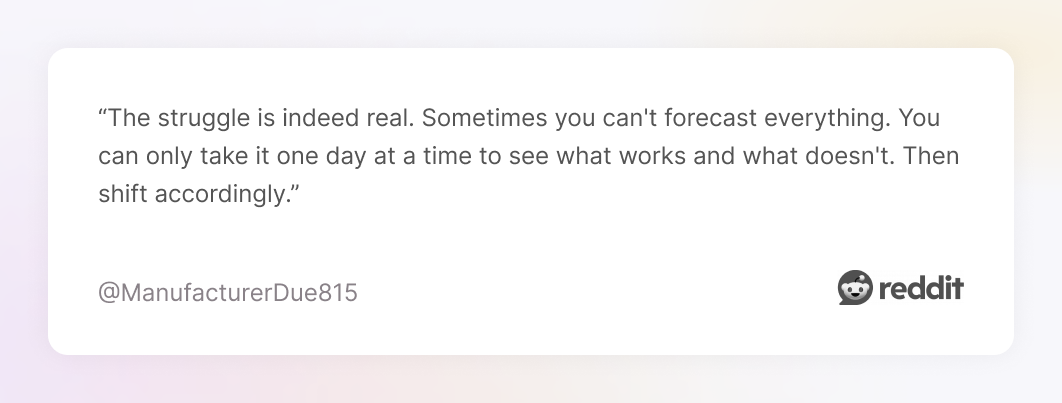
This is why measuring success after launch is just as important as the content itself.
But before you chase after “viral,” take a second to ask: What does success actually look like for this campaign? Not every post needs to go viral. Some campaigns are built to drive clicks. Some to get shares. Some to spark conversations.
Here’s a quick breakdown of core metrics based on campaign goals:
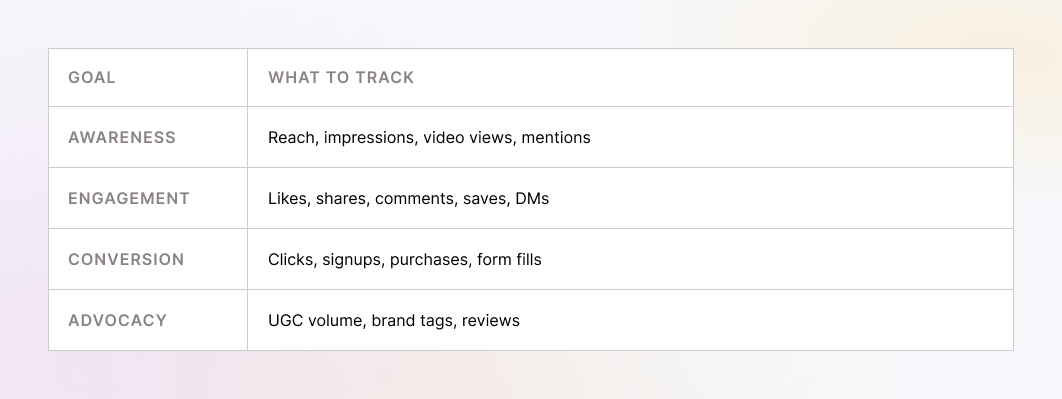
While numbers matter, context matters even more.
→ 1,000 views from your exact target audience may be worth more than 100,000 impressions from random users.
→ One quote tweet from the right person can outperform 500 likes.
→ A campaign that sparks real conversation might be more valuable than one that just gets scrolled past with a double-tap.
What we can say is that successful social media marketing has an individual definition for each case. Your task is to get clear on what that looks like for you. And while you’re thinking about that, let’s move on to the real-world examples.

When we started looking into social media campaign examples, we came across a ton of different ideas, each with its own twist. But to be honest, not all of them were truly successful. That’s why we narrowed it down to 15 successful marketing campaigns that actually worked and are definitely worth your attention.
Warner Bros., PhotoRoom, and creative agency Bond went with a simple campaign for the Barbie movie. On April 3, 2023, just ahead of the film’s release, they dropped the “Barbie Selfie Generator”, a tool that took less than an hour to set up.

Within weeks, it exploded. Over 13 million uses. Ordinary people, influencers, and celebrities like Rihanna and Pedro Pascal were plugging their faces into Barbie’s world. The filter used PhotoRoom’s background removal API to drop user photos into poster graphics that mirrored the movie’s official promos.
The campaign tapped into nostalgia, too. For people who grew up knowing Barbie, visuals were reminiscent of old posters, while the color palette, even the playful imperfection of user-generated content, made it feel personal.
What to learn: Ride the buzz around current tech/trends. Barbie’s team launched the selfie generator just when generative and visual AI were hot topics. That gave the campaign cultural momentum.
Launched by TBWA Paris in September 2019, the “Open Late” campaign was built to own late-night cravings. McDonald's used its iconic golden arches (“M”) stylized and blended into logos for nocturnal activities, like a glowing bowling pin, neon laser tag signs, and silhouettes of movie reels.

The campaign ran in print, outdoor, and digital formats across France, ensuring the message reached people wherever they were. In Italy, the company adapted the concept into a series of thematic visuals.
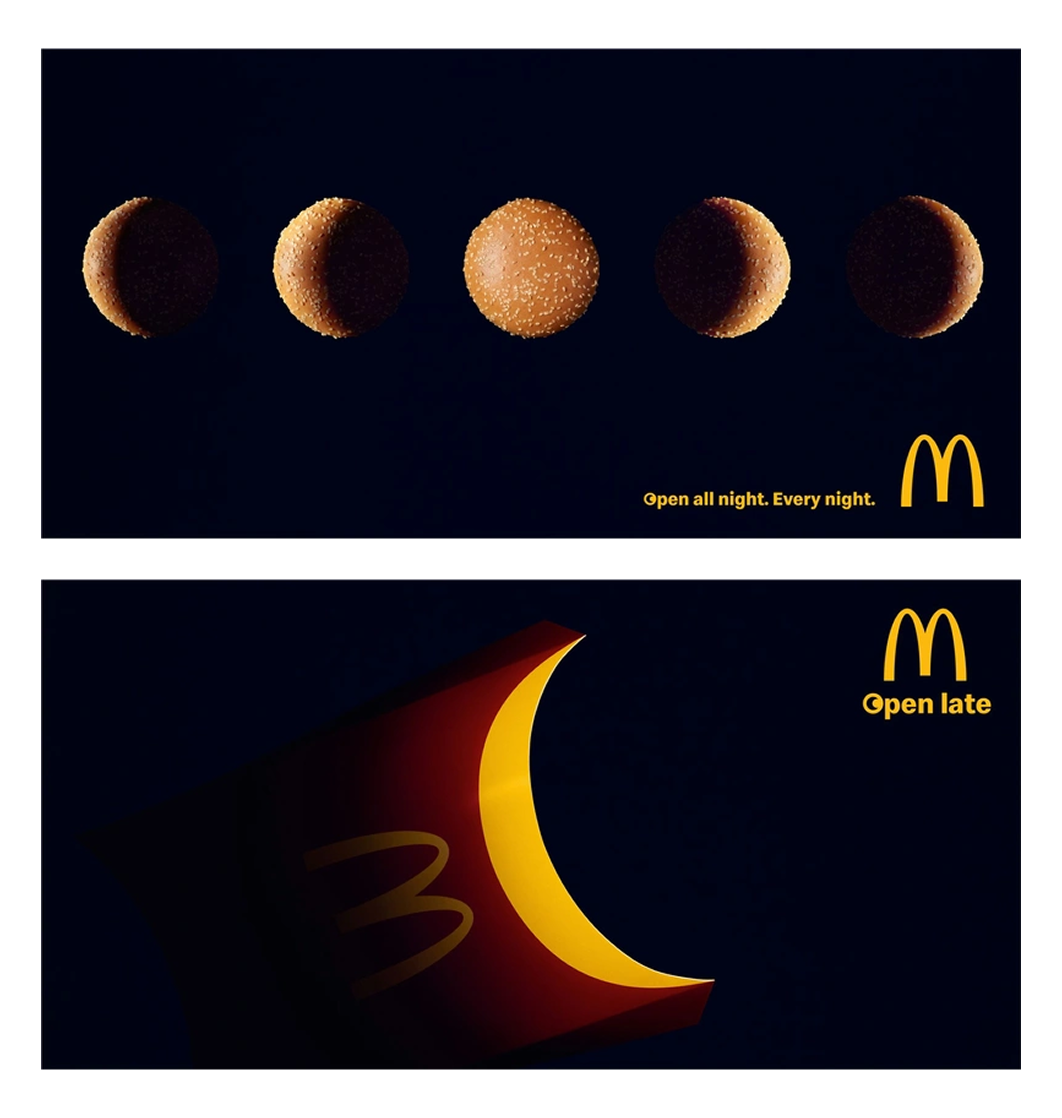
What makes this campaign interesting is how well it understands human behavior. People stay out late. They look for something accessible. And in the dark, glowing signs and familiar branding stand out. McDonald’s leaned on recognition, simple storytelling, and design that works in low-light or minimal settings.
What to learn: Use contextual relevance. This campaign meets people where they are — out at night with cravings. It isn’t trying to change behavior, just offering a solution when people need it.
TikTok launched the “It Starts on TikTok” campaign and positioned itself as the birthplace of internet culture. The campaign rolled out as a series of videos spotlighting popular creators and their most recognizable moments.
Part of what makes this one of the successful social media campaigns is how TikTok leans into user-generated content (UGC). It features creators, everyday users, and trending audio snippets to give a sense of authenticity. When someone sees something fresh that started with another user, it builds trust and momentum.
To back that up, TikTok has been doubling down on measuring beyond raw views. Analytics around reach, impressions, engagement (likes, shares, comments, saves), audience growth, and mentions in off-platform media are all part of proving “this started on TikTok.”
What to learn: Pay attention to where your audience spends time. If your target is trend-hunters, social first-movers, younger audiences, etc., positioning your brand as the origin point (or early adopter) creates credibility and momentum.
Every December, Spotify gives users the ability to see an interactive report of their listening habits. It’s a recap people wait to share, compare, and even brag about. Spotify takes your data, wraps it in colorful visuals and story-style graphics, and hands you something personal.

Wrapped feels like a holiday tradition because of how it blends data, design, and social sharing. In 2023, over 227 million users engaged with Wrapped. It rolled out across 170 markets and in more than 35 languages, making it feel local even while it remained a global campaign.

Despite making users happy, Spotify Wrapped is a case of effective social media marketing. It strengthens the brand's visibility, boosts awareness, drives downloads, and becomes content that users themselves create (via sharing).
What to learn: Use seasonal timing to build anticipation. Wrapped’s year-end release has become a ritual that users expect, proving that the right timing can turn a campaign into a tradition.
The “Shot on iPhone” campaign is simple, powerful, and built on the idea that everyday users can create stunning imagery. First launched in 2015 to highlight the 12-megapixel camera of the iPhone 6, Apple asked people around the world to share their best photos taken on iPhones under the hashtag #ShotoniPhone.
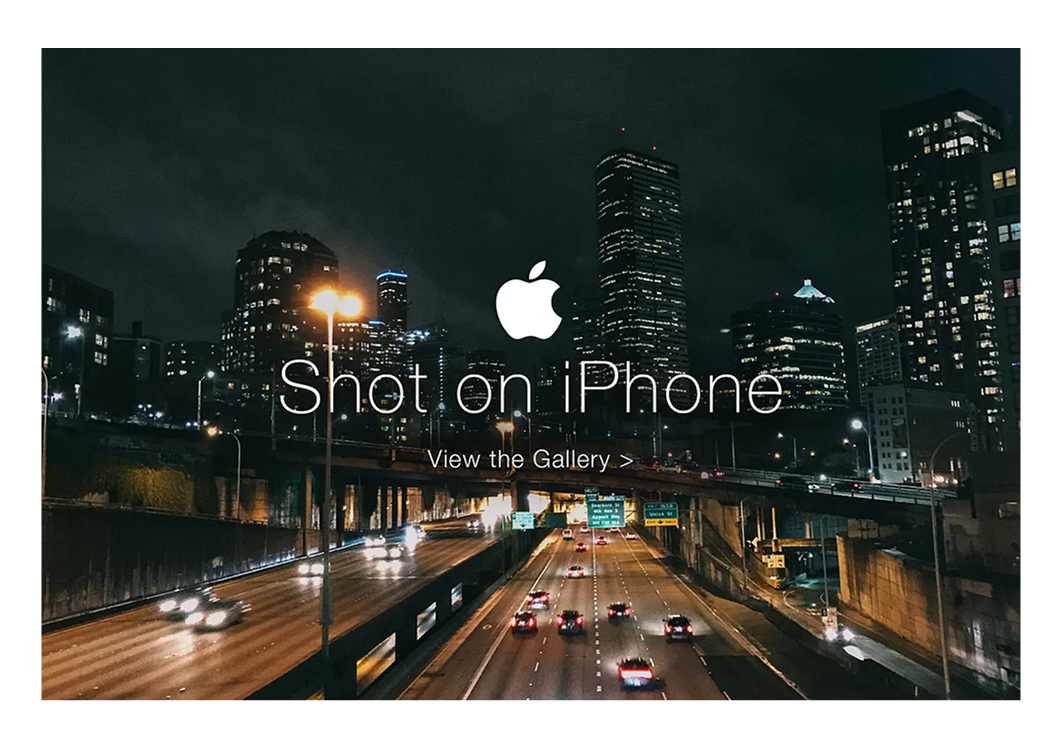
The campaign has scaled without losing its feel. From its billboard roots and transit posters to immersive digital ads and short films, Apple curates photographs from regular iPhone users. The brand has shown photos in cities everywhere, and it has become a global gallery of what people see through their lens.
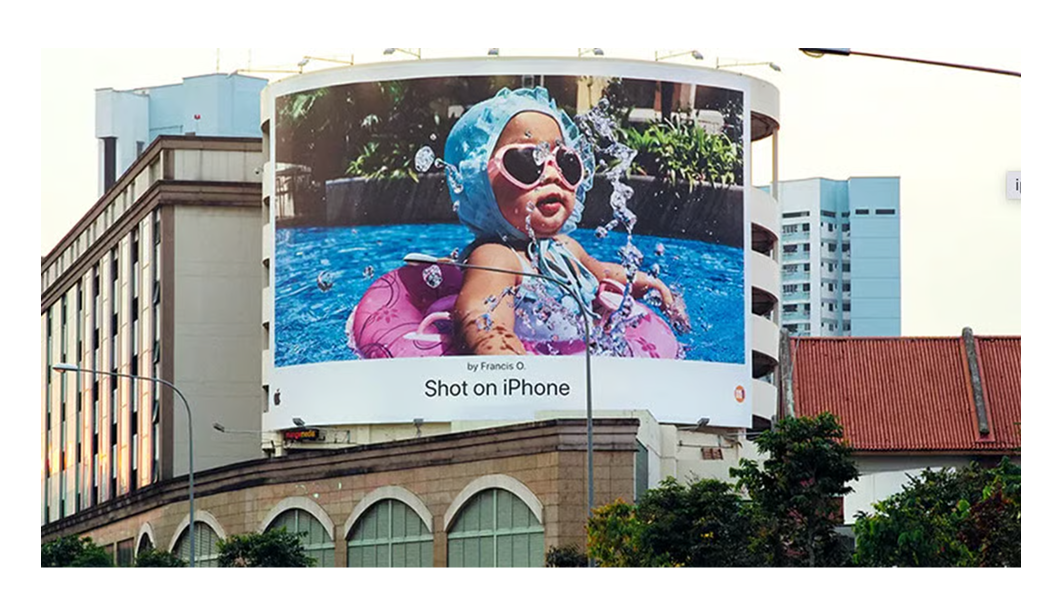
Fast forward to 2025, and “Shot on iPhone” earned the Grand Prix for Creative Effectiveness at the Cannes Lions festival. The jury praised it for being authentic, creative, rooted in user content, and still compelling even after a decade.
What to learn: Use real users’ work as your creative fuel. When people see peer-made, engaging content, they believe in what your product can do, and that shapes a positive brand image.
In March 2020, as lockdowns spread around the world, the J. Paul Getty Museum launched one of the most heartwarming cultural campaigns. Dubbed #GettyMuseumChallenge, its prompt was simple: pick an artwork from Getty’s digitized collection and try to recreate it at home using everyday objects.
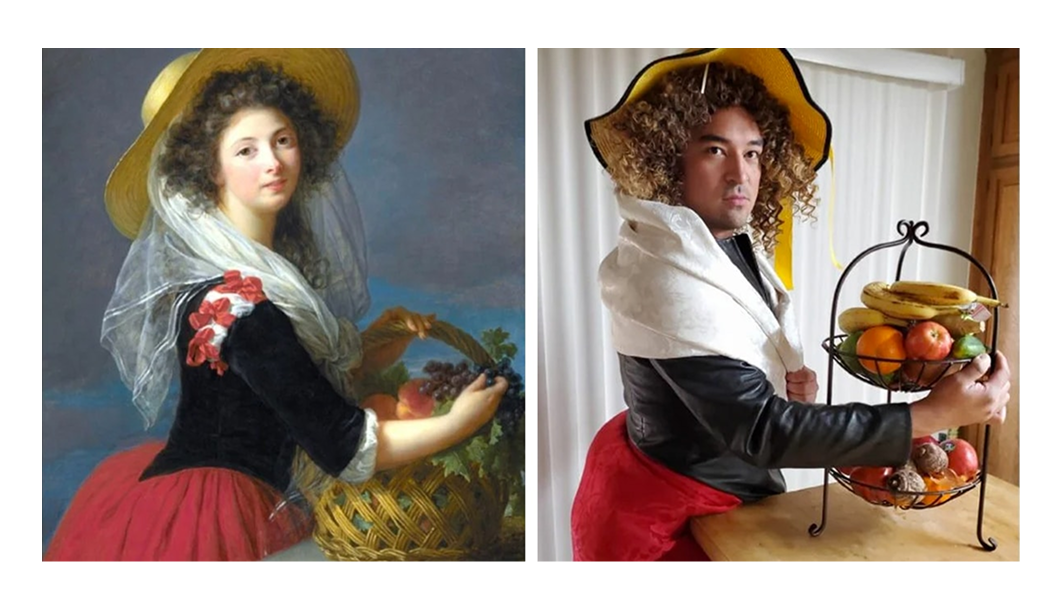
The social media response was massive. More than 100,000 people submitted recreations, and countless social media posts kept the challenge trending. It was also picked up by the press globally and inspired a book (titled Off the Walls).
During early quarantine, this example of social media marketing gave people a way to escape, be playful, and connect with others. Many recreations used items people already had around, so participation felt accessible. The challenge was also a reminder of how art connects us even when physical spaces are shut.
What to learn: Let simplicity be powerful. The Getty’s accessibility allowed the campaign to spread so widely, pulling in families, students, artists, and casual social media users alike.
Each holiday season, State Bicycle Co., the Arizona-based bike maker, runs a “12 Days of State” campaign. The idea is festive, time-limited, and built around surprise. For 12 consecutive days, they reveal a different “daily deal” that lasts 24 hours.
On Day 12, for example, they offered $100 off all bikes, or gave customers the option to take advantage of a larger voucher via their e-voucher program. The urgency is built in, as each deal disappears at the end of the day.
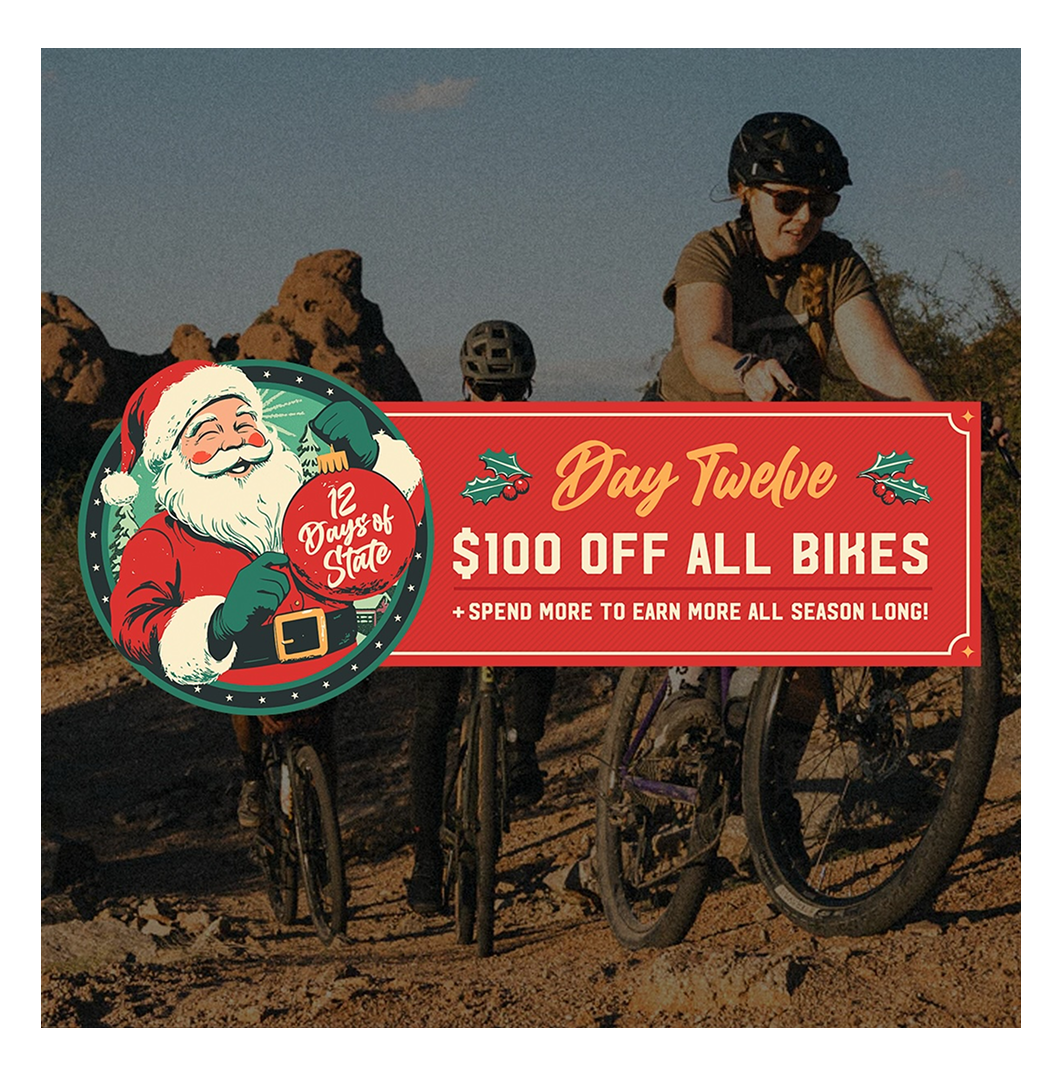
What’s neat is that “12 Days of State” manages to feel fresh and seasonal. The deals are real, the discounts meaningful, and the brand stays on message (high-quality bikes and accessories). It’s clear that the campaign appeals to enthusiasts who want gear and value both price and brand authenticity.
What to learn: Take advantage of multi-channel alerting. Emails, social posts, and website updates all worked in concert to boost website traffic, ensuring customers didn’t miss daily opportunities.
The McSpicy line is one of McDonald’s spicy food bets: a spicy chicken burger (or chicken thigh patty in many versions) packed with heat and flavour. It’s been introduced and reintroduced in many countries, and often leveraged in campaigns that put spice at the heart of digital marketing.
In Manchester, UK, McDonald’s ran the “McSpicy x Frank’s RedHot” promotion under the tagline “McDonald’s but make it hot.” Billboards were dressed in flames, TikTok and Instagram hosted the “But Make it Hot Challenge,” and influencers helped spread the message with content across channels.

Among examples of social media advertising, this one deepened the emotional bond between brand and audience. By turning the McSpicy into an experience, McDonald’s reminded fans why they loved it in the first place.
What to learn: Use regional flavor and cultural preferences to make a product or service resonate. When a brand becomes a part of culture, it builds customer loyalty and sparks conversations.
“Michael CeraVe” campaign bucked the usual skincare playbook with something weird, playful, and buzz-worthy. The campaign leaned into online chatter and rumor, rolled out in stages, and finally revealed itself during Super Bowl LVIII.
Weeks before the Super Bowl, Michael Cera was spotted signing CeraVe bottles and fueling rumors that he was secretly behind the brand. The mystery peaked during the Big Game, when Cera jokingly pitched himself as the namesake of CeraVe, only for the ad to reveal the truth that “Cera” actually refers to ceramides.

This campaign was interesting because of the way it combined earned media, influencer content, and storytelling. Instead of just paying for a 30-second Super Bowl spot, CeraVe used the lead-up hype to turn curiosity into conversation.
What to learn: Lean on curiosity and mystery to build anticipation. By planting small, strange clues ahead of the reveal, CeraVe kept people guessing and turned speculation into viral conversation.
In 2019, Dove launched Project #ShowUs together with Getty Images and Girlgaze to tackle a problem that had persisted for years: around 70% of women worldwide didn’t feel represented by the images they saw in media and advertising.
The plan was to build a stock photo library of over 10,000+ images, created by women and non-binary individuals from 39 different countries, showing what beauty looks like when stereotypes and digital distortions are removed.
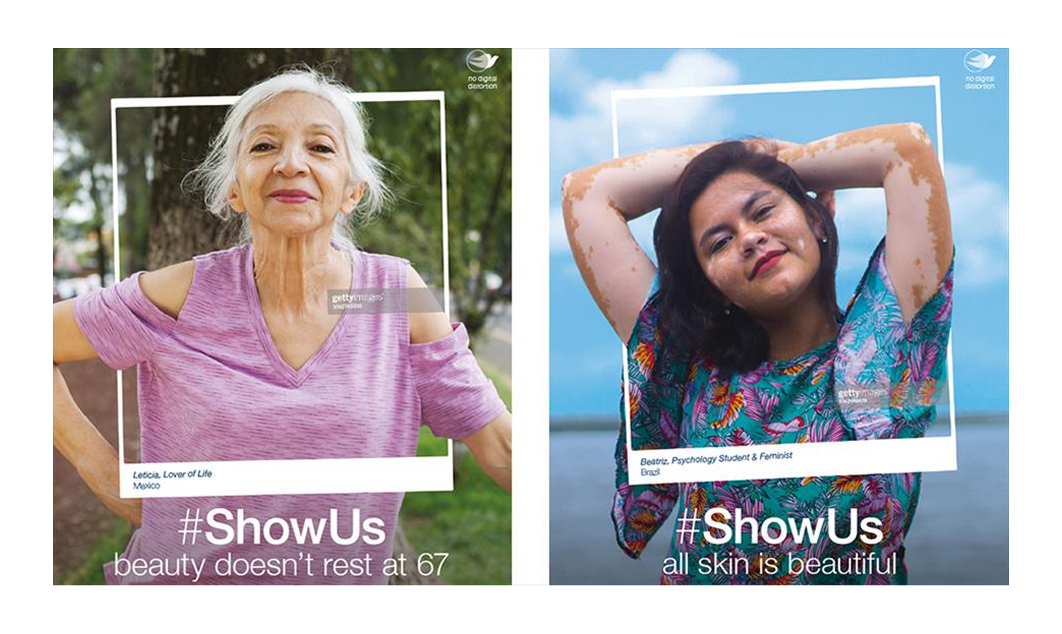
Each photograph is tagged by the subject themselves, so people define how they are seen rather than having external labels imposed on them. The execution was global. Campaigns adapted to local culture, including media partnerships, print & digital ad placements, and working directly with magazines.
What to learn: Don’t just create content, work to change systems. With #ShowUs, Dove shifted representation by deciding who gets to be seen, how they are portrayed, and who benefits from the images.
Adidas' brand mission was to end plastic waste by rethinking every part of how it makes products. The plan is built around the Three-Loop Strategy — Recycled Loop, Circular Loop, and Regenerative Loop.
As part of this, Adidas introduced performance fabrics like Primeblue (which includes Parley Ocean Plastic) and Primegreen (other recycled materials), with a target to eliminate virgin polyester in its products. It also launched projects like Futurecraft.Loop running shoe, built to be remade when it reaches its end of life.
One of their more creative activations tied to “End Plastic Waste” involved an augmented reality storefront experience. Using AR markers in shop windows, Adidas brought sea life into urban spaces, turning city streets into a good social media marketing campaign that reminds people of ocean pollution.
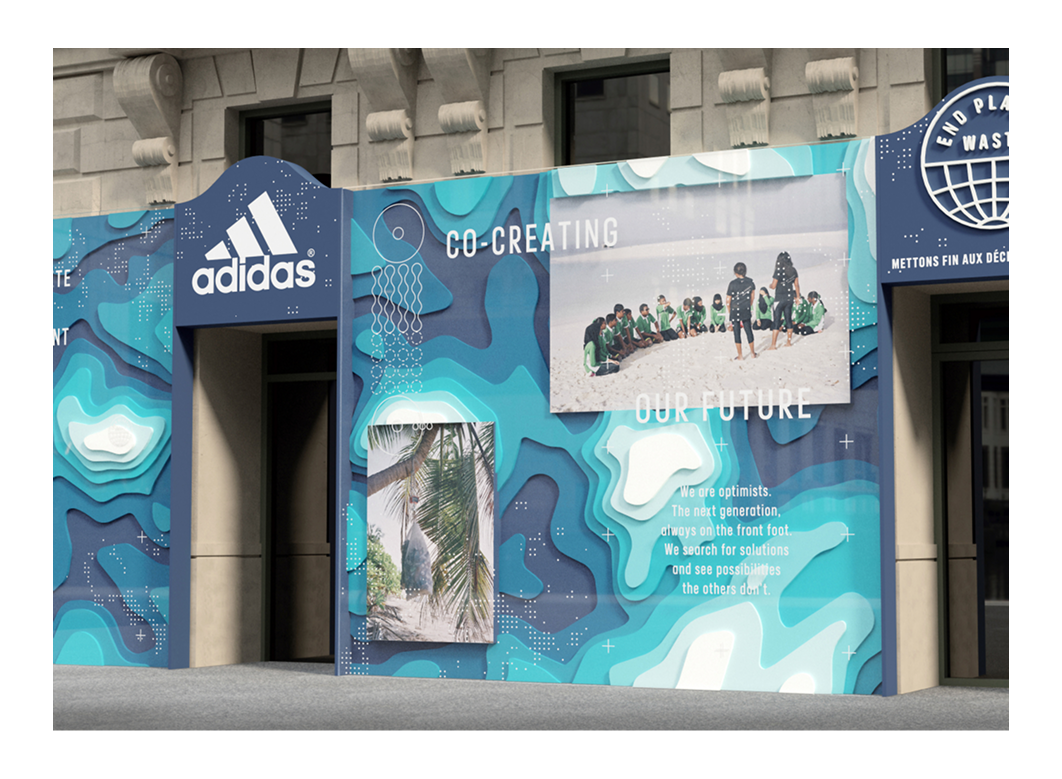
What to learn: Pair product innovation with visible actions. Removing plastic bags, creating recycled-material collections, all reinforce that the campaign isn’t just about advertising, but about doing things differently.
In May 2023, the American Foundation for Suicide Prevention (AFSP) launched Talk Away the Dark, a year-long campaign created with agency TBWA\Chiat\Day New York (pro bono) to encourage direct, brave conversations about suicide.
The campaign rolled out across broadcast, social media platforms, print, and digital channels, and partnered with Spanish-language communities with translated materials to ensure broader reach. There is also a #RealConvo guide series that equips people with tools to start and sustain these conversations.
The PSA reached over 4 million people, the campaign website saw over 127,000 views (a 125% increase over the previous year), and homepage interactions exceeded 85,000. Online impressions also rose significantly, with over 500,000 impressions and tens of thousands of engagements during key activation months.
What to learn: Try to focus attention on what truly matters. A campaign like this can reach people in crisis, offer real help, and remind a broader audience that some conversations are too important to avoid.
In February 2025, Duolingo announced that its mascot, Duo the Owl, was dead. The campaign kicked off on February 11, when Duolingo’s social channels posted a mock obit and replaced the app icon with an image of Duo with crossed-out eyes and a tongue out, signaling his faux death.
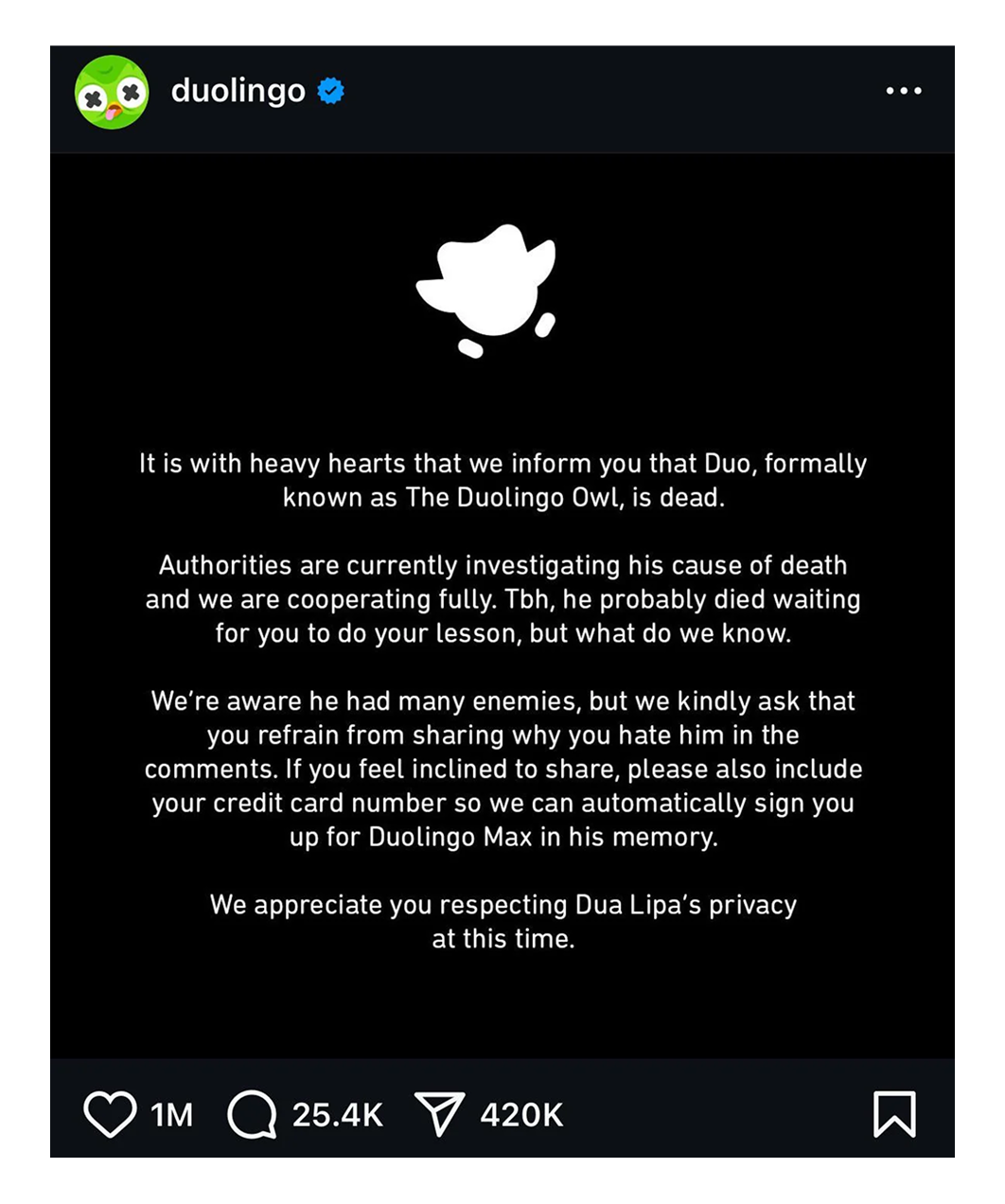
The stunt didn’t stop there. Within days, Duo’s “death” drove mentions of the mascot up by more than 25,500%, the hashtag #ripduo was used over 45,000 times, and the campaign generated 1.7 billion social media impressions.
But of course, Duo wasn’t actually gone and had faked his death. The brand tied the resurrection to user behavior — lessons completed, XP earned — giving fans a reason to engage more with the app in the meantime. Being one of the best examples of social media marketing, the campaign stood out for its surprising twist.
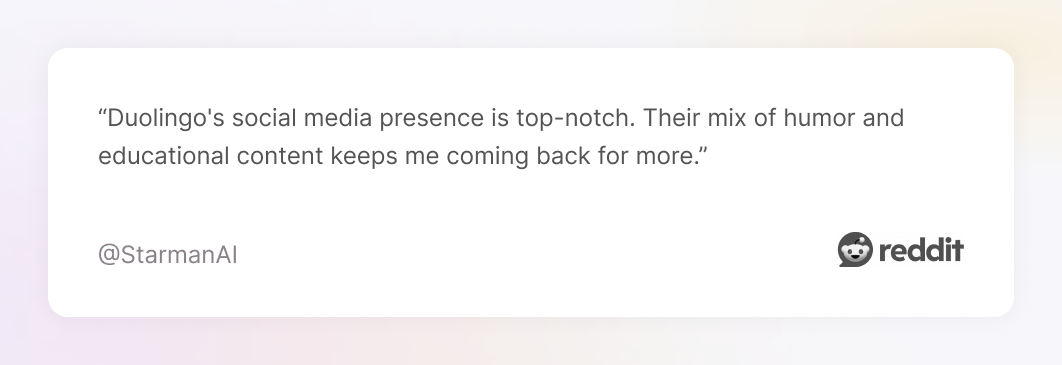
What to learn: Sometimes it pays to take risks. Duolingo showed how a bold, unexpected move can cut through the noise, spark massive conversation, and turn a campaign into something unforgettable.
Airbnb’s “Live There” campaign flipped the script on traditional travel advertising. Rather than telling people where to stay, “Live There” showed them how to stay, with a focus on authentic experiences and local neighborhoods.
The campaign leaned heavily on storytelling. Commercials contrasted generic travel with immersive local moments, while print and out-of-home images portrayed people in everyday local scenes.
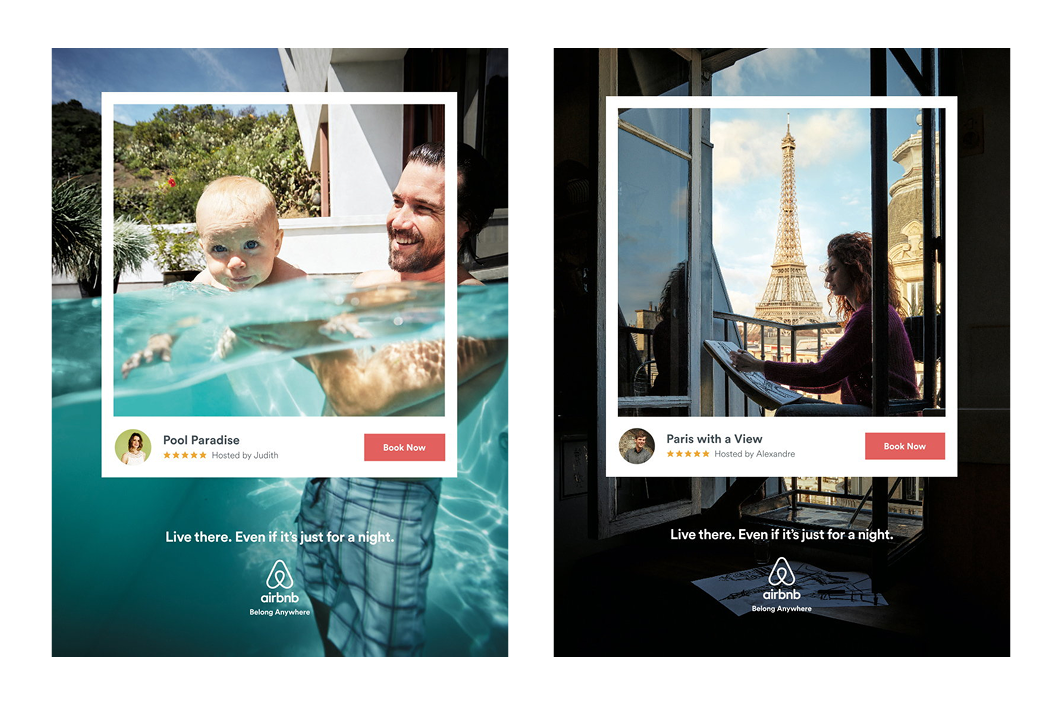
Airbnb also rolled out new app features alongside the campaign. But what mattered most was the impact. The campaign increased brand awareness, shifted perceptions of Airbnb to a lifestyle and cultural immersion brand, and drove customer engagement through user-generated content and localized stories.

What to learn: UGC content is more important than ever. Just as Airbnb used authentic traveler stories to strengthen its brand image, you can leverage user experiences to show how people truly enjoy your product or service.
The “Share a Coke” campaign began in Australia in 2011 as a bold personalization experiment. Instead of the classic Coca-Cola logo on bottles and cans, the product line featured 150 of the country’s most common first names, inviting consumers to find a bottle with their name or someone they know.
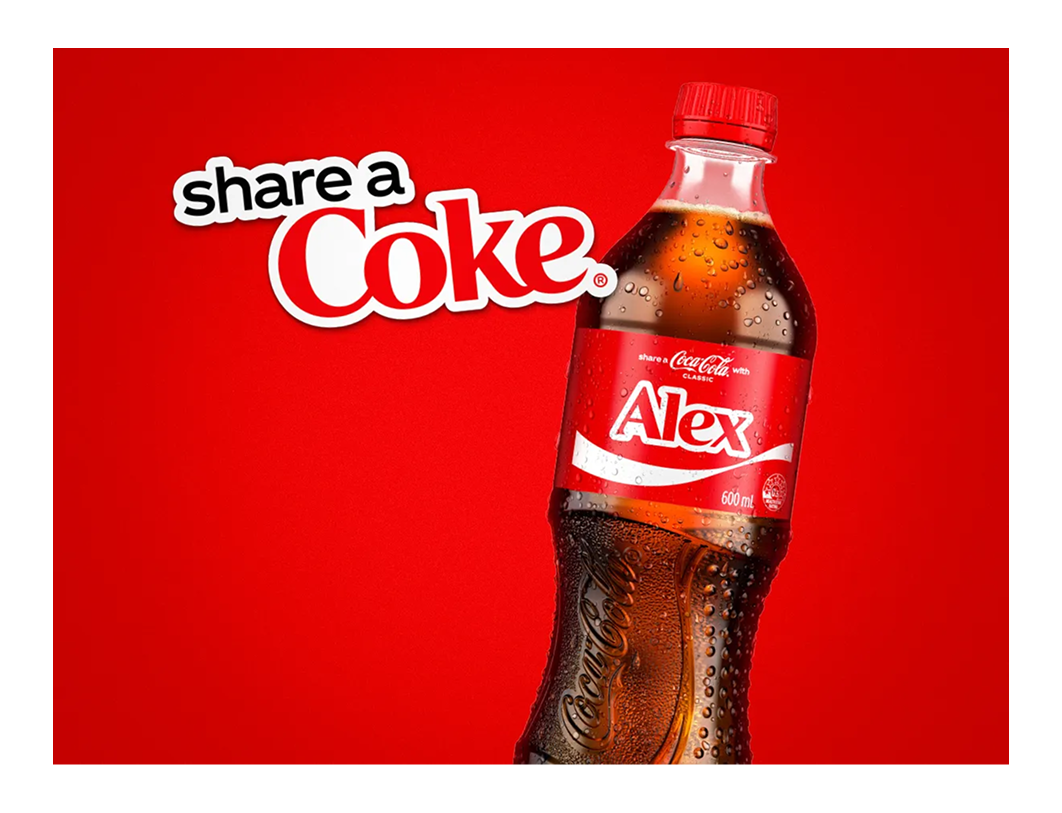
As a result, more than 250 million personalized bottles and cans were sold in a country of just under 23 million people. The concept soon spread globally and has reached over 70+ countries.
Coca-Cola keeps adding new twists with more names, expanded markets, special editions, and digital personalization tools. Sales rise, brand recognition spikes, and the brand maintains a strong social media presence as thousands of people post photos of their personalized bottles using the hashtag #ShareACoke.
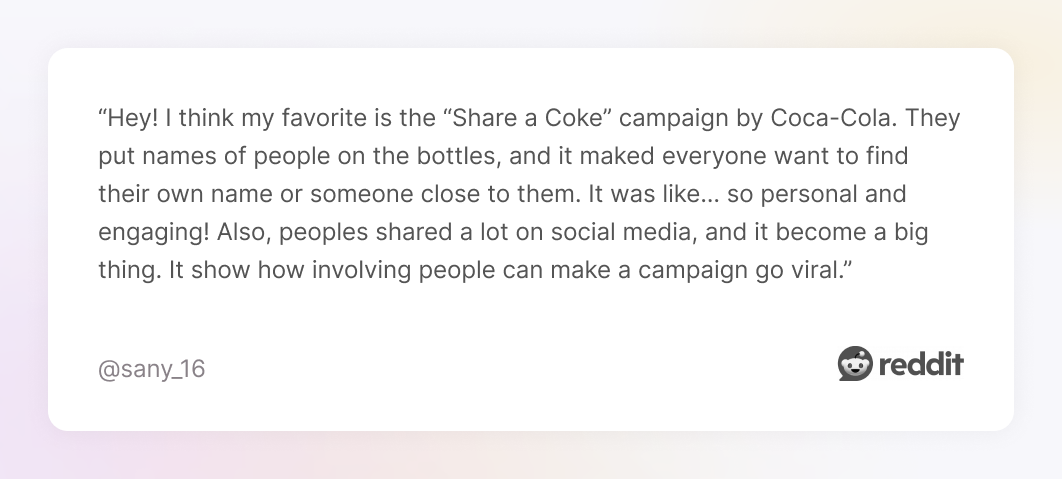
What to learn: Personalization can work wonders, whether you’re offering digital or physical products. Coca-Cola used bottles with names on them, while you can create something unique that turns into a true story for your target audience.
Looking at the best social media marketing examples can be inspiring, but copying them directly won’t get you far. The real value lies in understanding why they worked and translating those ideas into something that makes sense for your brand, audience, and resources. Here’s a five-step process to do just that:
1. Define your goal.
Are you trying to reach as many new people as possible, spark conversation with your community, or push an audience closer to conversion? Campaigns that aim for awareness look very different from those built for sales.
Take Spotify Wrapped as an example. It wasn’t designed to sell subscriptions, but to keep the brand at the center of conversation year after year. Compare that to State Bicycle’s “12 Days of State,” which used time-limited offers to increase sales. If you’re not clear on your goal, you risk going the wrong path.
2. Find your audience where they live.
Think about where your audience spends time. TikTok users expect humor, speed, and creativity. Instagram fans lean into visuals and aesthetics. LinkedIn might be the right place if your brand’s story is B2B. Some of the best social media branding examples come from brands that matched their voice perfectly to the platform.
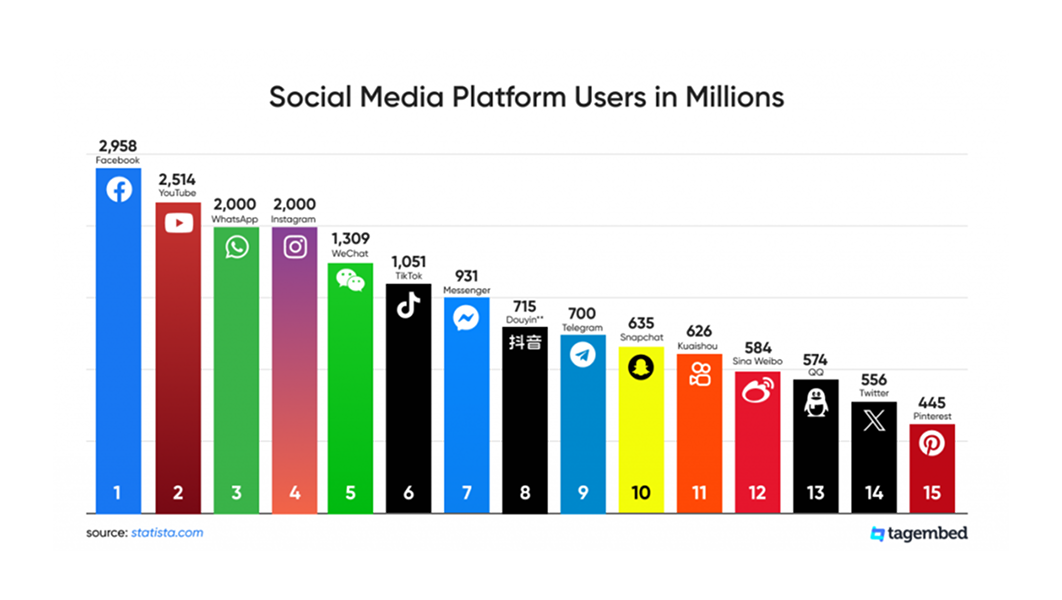
3. Design for participation.
The Getty Museum Challenge exploded worldwide because it gave people a simple way to join in and put their own spin on art. The same goes for “Share a Coke,” where personalization made every bottle part of someone’s story.
For your brand, that means building campaigns that invite people to take part. Give them tools or formats that are easy to adapt, and make sharing feel natural rather than forced. Think in terms of memes, challenges, or personalized assets, anything that turns your audience from passive viewers into co-creators.
4. Launch with timing in mind.
Even the best idea can flop if it shows up at the wrong moment. Remember Barbie’s selfie generator? It landed right as AI filters were peaking in relevance. That’s why you need to account for cultural waves, seasonal rituals, or even quieter calendar moments where your campaign has room to shine.
5. Measure the right things.
Not every campaign has to go viral. Dove cared about representation, Duolingo cared about conversation, and State Bicycle cared about driving sales. What you should do is carefully pick the success markers that align with your social media marketing efforts, and avoid getting distracted by vanity numbers.
Social media channels never sit still. What works today might feel stale tomorrow, and the only way to keep up is to stay curious, keep testing, and listen closely to your audience. The brands that win are the ones that adapt quickly and run with ideas that fit their voice.
If you’re serious about making your campaigns stand out, treat each one like an experiment: set a clear goal, try something bold, and learn from the results. The more you practice, the more natural it becomes to spot opportunities before your competitors do.
And if you ever feel stuck or just need stunning visuals for your next big idea, drop a line to TodayMade — we’re always here to help.


